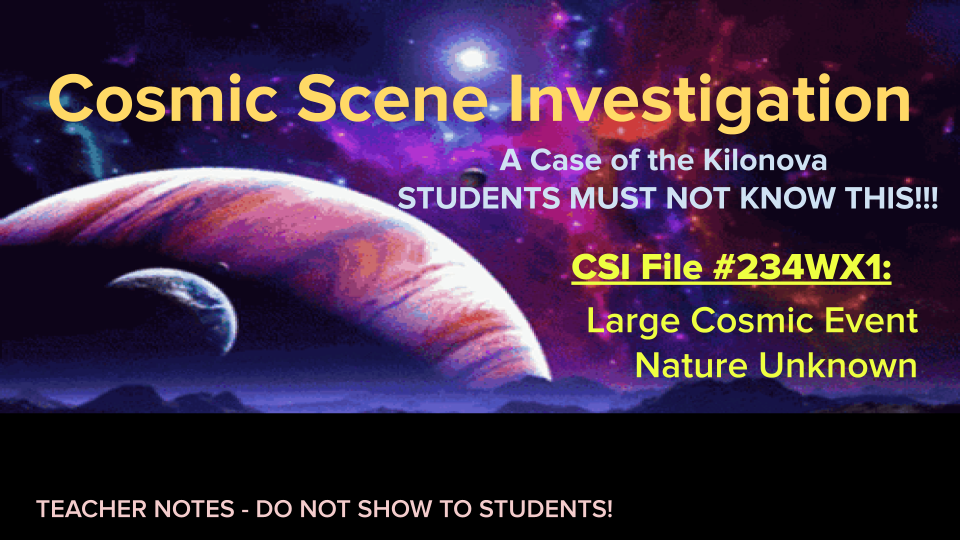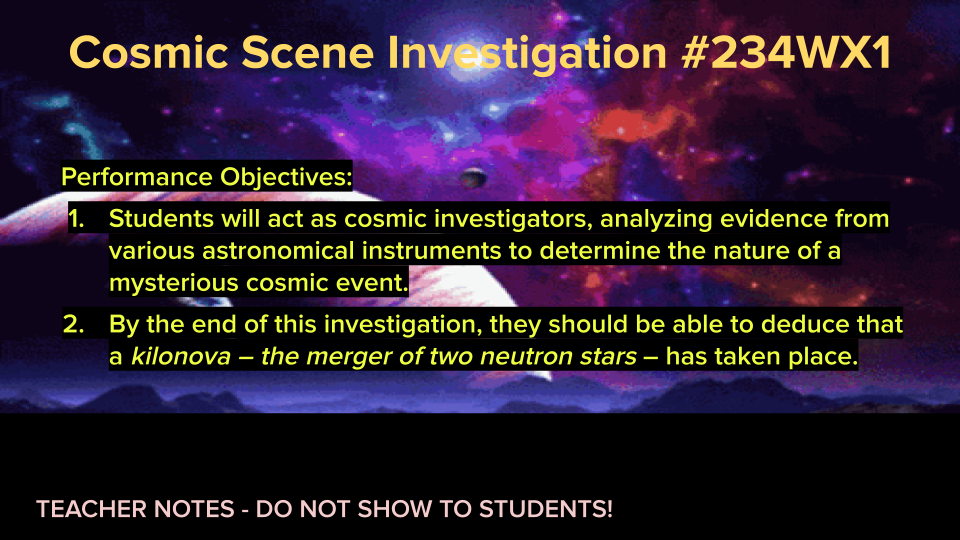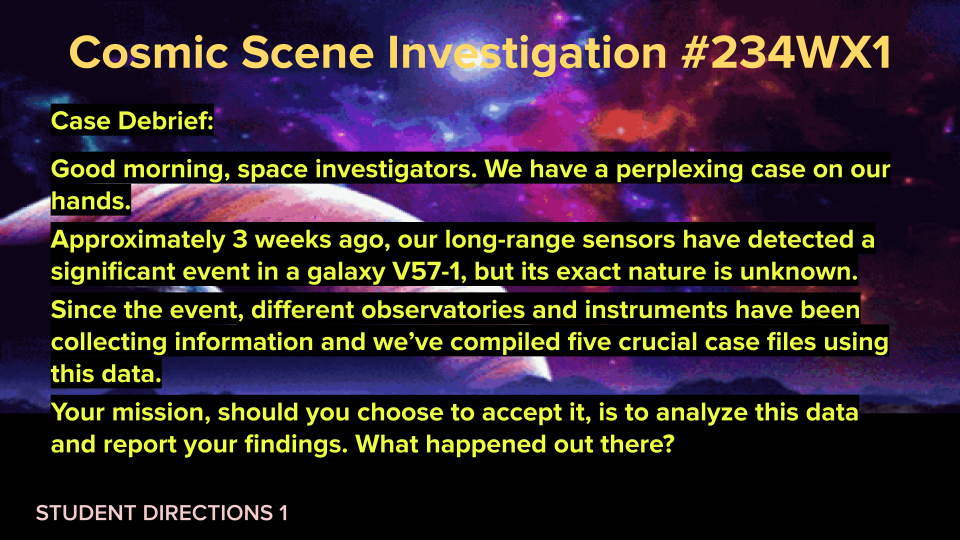[Earth & Space Science] Cosmic Scene Investigation: A Case of the Kilonova
[Earth & Space Science] Cosmic Scene Investigation: A Case of the Kilonova
In this 50 - 70 minute, CSI-style investigation, designed for a high school Earth and Space Science classroom, students investigate a space phenomenon of kilonova. The investigation is set up so students do not know a kilonova occurred. Rather, they are given five case files on a major phenomenon that occurred in a fictional galaxy V57-1. The case files contain information they will have to interpret and research online to first understand the clues each file contains to later be able to arrive at the correct conclusion that a kilonova, caused by a collision and merging of two neutron stars has taken place.
Why and how does this learning strategy work?
Rote memorization out; seeking answers and deeper learning in.
The CSI-style approach to learning is fun, engaging, and motivating for learners, because they are called upon, thus challenged to find answers based on evidence rather than given a list of facts to study about a topic; space in this case.
When students are allowed to act as investigators, they develop skills such as analyzing evidence from various sources to understand the world and how it works. They not only hone and apply Science and Engineering Practices (SEPs), but also learn Earth and Space Science content while investigating a real-world (or real-space) phenomenon, which is what the Next Generation Science Standards (NGSS) call for.
Student Learning and Performance Objectives:
Analyze scientific evidence to arrive at a correct conclusion about the cosmic event that occurred in a distant galaxy. Synthesize multi-messenger astronomical evidence to draw conclusions about complex cosmic phenomena.
Understand the role of various astronomical instruments in space exploration.
Describe different types of data collected by these instruments.
Explain how element emission spectra are used to identify space objects and phenomena.
What's included:
13 slides that introduce, explain, and guide the teacher and students
Detailed teacher notes on prep, main lesson, and follow up activities
A link to a student-only slideshow.
Detailed student directions.
5 case files that contain data collected about the event for students to investigate
Teacher answer key describing what conclusions students should make from each case file.
Report File - guided Google Doc for students to fill out as they take note on each case file. data and generate their conclusions
Student Learning and Performance Objectives
Debriefing activity and key talking points
Follow up discussion questions and a next day bell ringer





